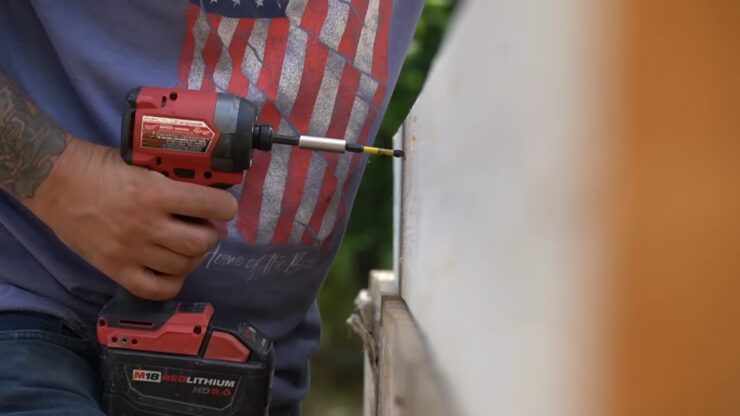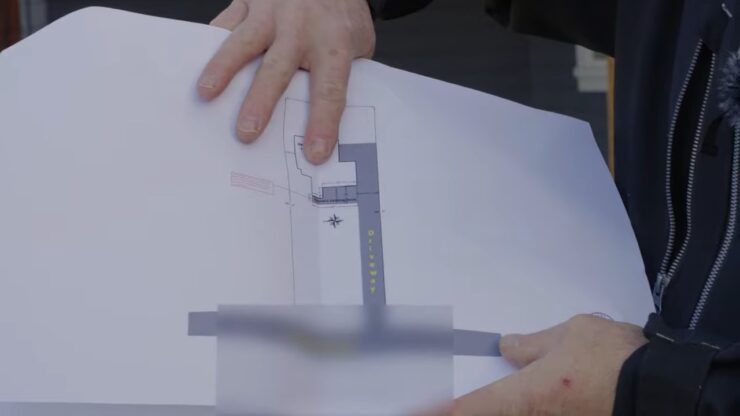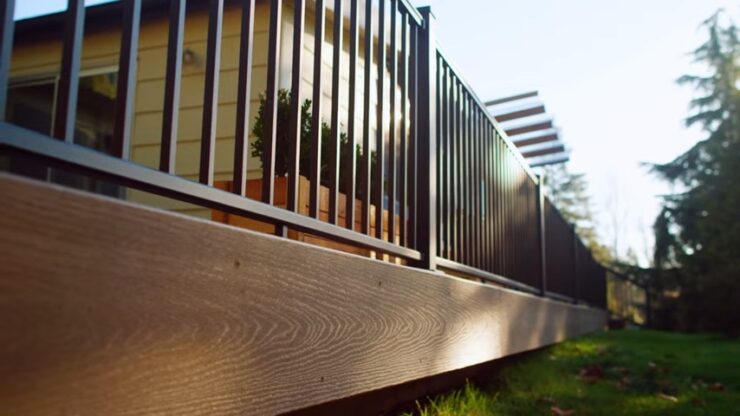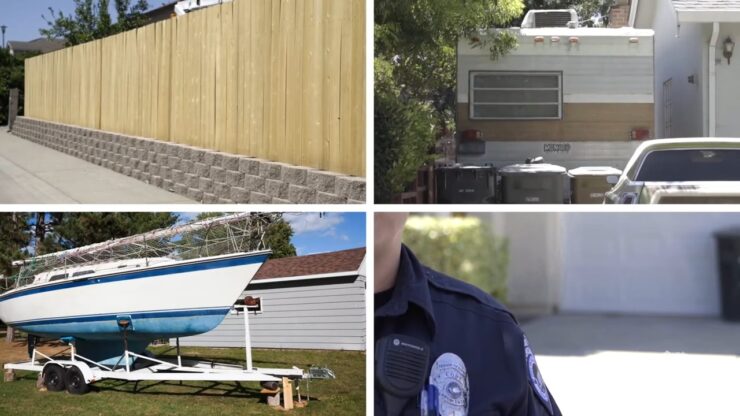Thinking of building a new garage, shed, or fence near your neighbor’s property? It’s essential to know the rules first! Depending on where you live, from bustling cities to quiet countrysides, the guidelines can vary.
Here’s the gist:
- The safe distance to build from your neighbor’s property can be anywhere from 5 to 15 feet, depending on what you’re constructing.
- Always chat with your neighbor before starting any big projects. It’s not just about being neighborly; you could face penalties from your local authorities if you overstep.
- Different structures, like sheds, pools, fences, and other buildings, have their own specific rules. Your local government sets these, so it’s crucial to check with them first.
In short, always check the local rules and chat with your neighbor before building anything close to their property. Better safe than sorry!
Getting Ready to Build? Here’s What You Need to Know!
Stepping into the world of property ownership? Or maybe you’re just brushing up on property rules? Either way, when you’re thinking of adding something new to your space, there are a few key terms and tips to keep in mind:
- Setbacks: These are specific distances from property lines where you can’t build. It ensures you’re not building too close to your neighbor or public spaces.
- Easements: This is a right given to someone else to use a part of your property, often for utilities or access. It can affect where you can build.
- Quitclaim deeds: A legal document where someone can transfer their ownership rights of a property to someone else, without any guarantees.
Setbacks
Think of setbacks as the “personal space” for buildings. It’s the distance that needs to be maintained between your new structure and the property boundary. This isn’t just about the space between your house and the new garage you’re dreaming of, but also between the new structure and other landmarks like sidewalks or rivers. Your local town or county sets these rules.
Easements

Imagine wanting to build something, but your property doesn’t have enough room. That’s where easements come in. It’s like asking your neighbor, “Can I use a bit of your space?” These agreements can be informal or legally binding. But remember, if there’s ever a disagreement later on, having a documented easement can be a lifesaver.
Quitclaim Deeds
Ever been unsure about where your property ends and your neighbor’s begins? Or maybe you both agree to adjust the boundaries a bit? Quitclaim deeds are the solution. They’re legal tools that help neighbors sort out or transfer property lines. But, it’s essential to have a lawyer in the mix to make sure everything’s clear for future homeowners.
Talk and Research
Building is not just about bricks and mortar; it’s about relationships. Chat with your neighbors and local authorities about your plans. It’s the best way to keep things smooth. And don’t forget to do your homework. Know who’s who in your local government and who’s in charge of building permits.
The Permit Journey
Getting a permit isn’t just about filling out a form. It’s a process. After you’ve mapped out your property, you can apply. But remember, patience is key. Approval can take days or even months.
And once you get that permit, keep an eye on the clock. Depending on where you live, there might be a time limit on when you need to start and finish your construction.
In a nutshell, building near property lines requires a mix of communication, legal know-how, and patience. But with the right approach, you’ll be laying the foundation in no time!
Navigating Building Rules: A Quick Guide
Starting a building project? First things first: get that building permit! Here’s a quick rundown of what you need to know:
- Where to Find Rules: Each state, county, and township can have its own building laws. Your best bet? Check your state’s website. If you’re drawing a blank there, give your local legal offices a ring. After all, you’ll need to get your building permit from them.
- How Close Can You Build?: Typically, you can build structures anywhere from 5 to 15 feet away from the property line. But here’s the catch: you need to know exactly where that line is.
- Finding Your Property Line: It’s not always a straight line in the sand. Property boundaries can be tricky. If you’re scratching your head looking at your property, dive into your property documents like the deed. Still unsure? It might be time to call in a professional surveyor.
Do You Need a Permit? Here’s How to Tell
Thinking of sprucing up your property? Before you start, it’s crucial to know if you need a building permit. Here’s a quick guide to help you figure it out:
1. Interior vs. Exterior:
- Interior Renovations: Generally, you’re in the clear. These usually don’t need permits since they don’t affect property lines or neighbors.
- Exterior Renovations: Tread carefully. If you’re touching exterior walls, porches, or patios, you might need a permit.
2. Common Projects Needing Permits:
If you’re planning any of the following, it’s a good bet you’ll need a permit:
- Patios, patio covers, or decks
- Gazebos
- Swimming pools
- Garages
- Sheds
- Adding extra floors
3. It’s Not Just About the Outside:
Even if your project is indoors, you might still need a permit, especially if:
- It involves load-bearing structures.
- You’re making changes to utilities.
- The project’s cost exceeds $5,000.
4. Utility Changes:
Tinkering with any of the following? Time to check for permit requirements:
- Plumbing
- Electrical systems
- Heating & cooling
- Major structural changes, like adding floors or extensive repairs
When in Doubt, Ask!
If you’re unsure whether your project needs a permit, it’s always better to be safe than sorry. Give your local office a call. It’s way better than facing fines down the road. Happy renovating!
Building Penalties and Navigating Disputes
Venturing into a building project near your property line? Tread carefully! Building without the right permits or too close to your neighbor’s property can land you in hot water. Here’s what you need to know:
1. The Consequences of Overstepping:
Building without the necessary permits can lead to:
- Fines: You’ll likely be hit with a financial penalty.
- Forced Removal: You might be ordered to remove the structure by a certain date. If you don’t, the local authorities might do it for you and send you the bill.
2. Zoning Violations:
Building in the wrong place or the wrong way can be classified as a zoning violation. The consequences can be:
- Fines: The most common penalty.
- Criminal Charges: In severe cases, if an investigation finds serious wrongdoing.
- Safety Inspections: Any new structure will be inspected for safety. If it’s not up to code, expect more fines.
- Long-Term Impacts: A zoning violation can haunt you. You might face difficulties getting future permits, and when selling, your property might be valued less or might not sell at all if it doesn’t meet zoning regulations.
3. What If You’re in Violation?:
All hope isn’t lost. If you’re slapped with a violation:
- Appeal: You can challenge the violation, hoping for a resolution. It’s essential to consult with legal professionals in such cases.
FAQ
Can you build right next to the property line?
Typically, you cannot build directly on the property line. Local regulations usually dictate setbacks that determine how close you can build to the boundary.
How close to my property line can I build a deck?
The distance you can build a deck from your property line varies based on local regulations. It’s essential to check with your local municipality or county for specific guidelines.
How close to a property line can you build a fence?
The rules differ by location. Some places might allow fences right on the boundary, while others may require a small setback.
What is the 7-year boundary rule UK?
This rule refers to a situation where a person occupies a piece of land continuously for seven years without dispute. After this period, they may claim ownership. However, it’s crucial to consult with legal professionals regarding specific cases.
What’s the 45-degree rule?
This is a guideline used in planning, especially concerning extensions and loft conversions. It ensures that a new building doesn’t overly block light to neighboring properties. The rule implies that an imaginary 45-degree line from the middle of your neighbor’s nearest window should not be crossed by your building.
Do I have to give my Neighbour the good side of the fence?
While it’s a common courtesy to give neighbors the more finished side of a fence, it’s not always a legal requirement. Local regulations or neighborhood agreements might dictate this practice.
Can you put two fences next to each other?
Yes, you can put two fences next to each other unless local regulations prohibit it. However, it’s a good idea to discuss this with your neighbor to avoid potential disputes.
How close can my neighbor build to my property line in California?
In California, the rules about how close you can build to a property line vary by city and county. It’s essential to consult local zoning ordinances and building codes for specific guidelines.
Final Words
The extended process of obtaining a permit, figuring out one’s property lines, and the lengthy construction process can be a process that is tiring for many, especially if you are applying for a permit for the first time. The finished product when the process is over is one of the greatest pleasures in the world of homeownership, with the benefit of long-awaited gratification and excitement.



















